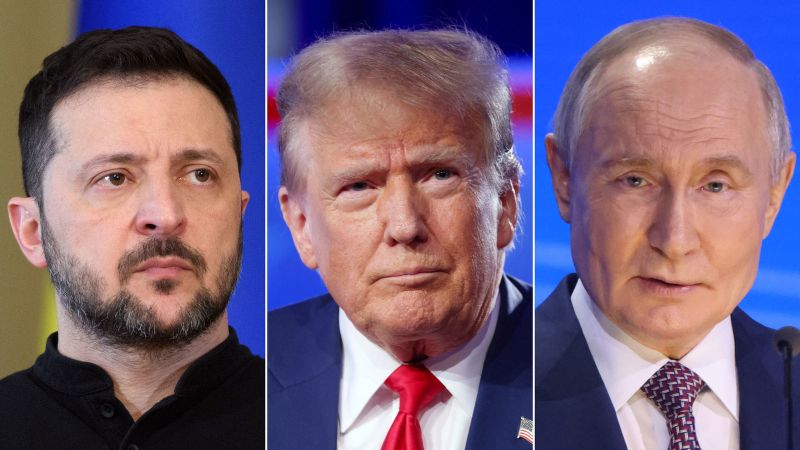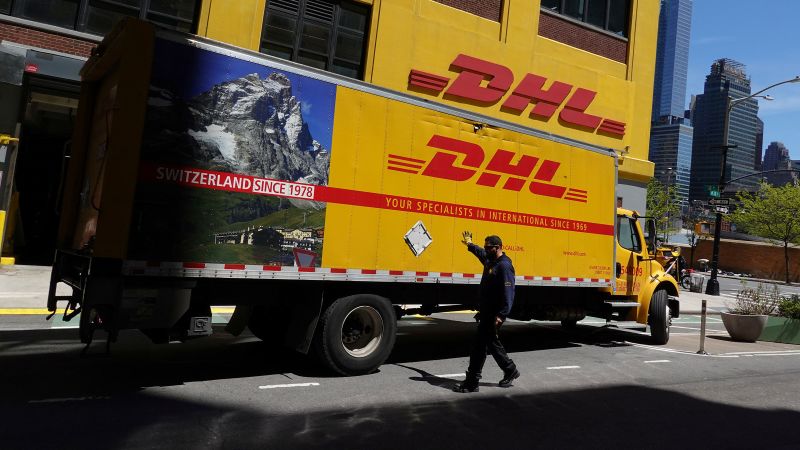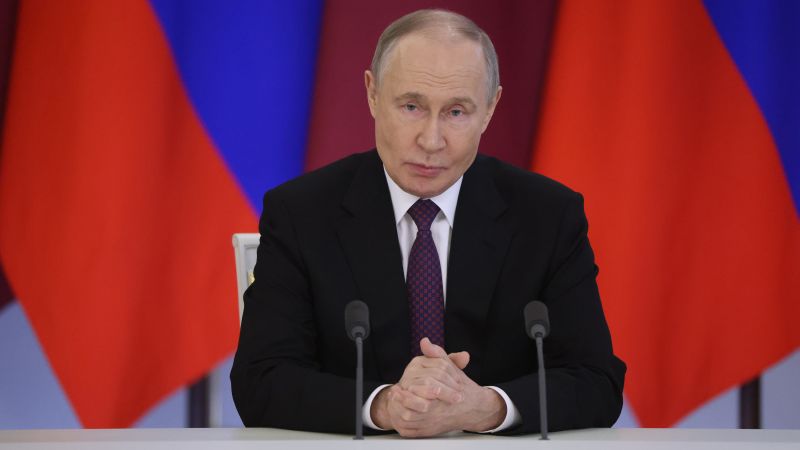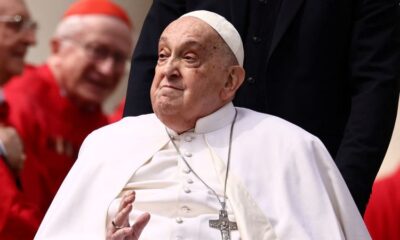CNN
—
President Donald Trump’s calls with President Vladimir Putin and President Volodymyr Zelensky this week represent the most intense diplomacy aimed at ending the war in Ukraine since Russia’s invasion three years ago.
Early signs are discouraging, since Putin refused to sign up for Trump’s proposal of a 30-day ceasefire. But Trump is framing the opening of any dialogue as a triumph. And each leader is trying to manipulate the diplomacy to their own ends and playing the public relations game – not least to escape blame if everything falls apart.
The White House is spinning a fiction of significant progress both to keep alive the chances of a peace process developing and to support the increasingly tenuous conceit that Trump is a great dealmaker, uniquely able to forge peace.
Putin flatly refused Trump’s big ask on the ceasefire. Quite simply, he’s not ready to end the war yet, as can be seen from a new set of conditions that Ukraine could never agree to if it is to survive as a sovereign state. But the Kremlin also doesn’t want to alienate Trump, and it offered him the tantalizing glimpse of a great power relationship with Putin to draw the president in.
Zelensky is a quick learner. He can’t afford a repeat of the disastrous Oval Office blowup, and now readily agrees to almost everything Trump asks. Ironically, Zelensky’s meltdown-sparking argument – that Putin cannot be trusted to make or keep ceasefire agreements – has now been proven true.
Ukraine and Russia are each vying for the president’s attention and seeking to blame the other for impeding peace. After a violent night, each side accused the other of breaking the partial agreement brokered by the US president to avoid hitting energy infrastructure. Their estrangement over even this minor detail undermines Trump’s bullish statements that a peace deal is within reach.
The US ignores its initial failure and pushes ahead
The White House has publicly ignored Putin’s intransigence, praising the tone of his call with Trump on Tuesday and scheduling technical talks with the Russians in Saudi Arabia in the coming days.
Creating an illusion of progress can be an important aspect of peace negotiations, offering an incentive for warring sides to stay at the table. But in this case, the alternate reality seems also intended to spare the blushes of a president who predicted he’d solve the war within 24 hours if voters sent him back to the White House. In their phone call on Tuesday, Putin clearly got the better of a US president who is unwilling to impose any leverage on the Kremlin strongman.
On the other hand, Trump seems to have eased up on Zelensky, perhaps because of the Ukrainian president’s more flattering tone. He agreed in their hourlong call Wednesday to help locate vitally needed air defense equipment for Ukraine in Europe. And White House press secretary Karoline Leavitt said the US would continue to provide military aid and intelligence to Ukraine. This is important because Trump cut off such assistance to force Kyiv to come to the table on his 30-day ceasefire plan. And it’s a rare rebuke to Putin, who made the halting of US military and intelligence resources for Ukraine a condition of joining a quest for permanent peace.
“Just completed a very good telephone call with President Zelensky of Ukraine. It lasted approximately one hour,” Trump wrote on Truth Social. “Much of the discussion was based on the call made yesterday with President Putin in order to align both Russia and Ukraine in terms of their requests and needs. We are very much on track.” Trump’s bullish assessment was almost absurdly upbeat. But it’s better than a few weeks ago when he was calling Zelensky a “dictator.”
After his calls with Putin and Zelensky, Trump’s dream of a peace deal seems further away than ever. Still, if all this week’s drama is somehow the start of a real push to conjure a fair and permanent settlement, Trump will prove his doubters wrong.
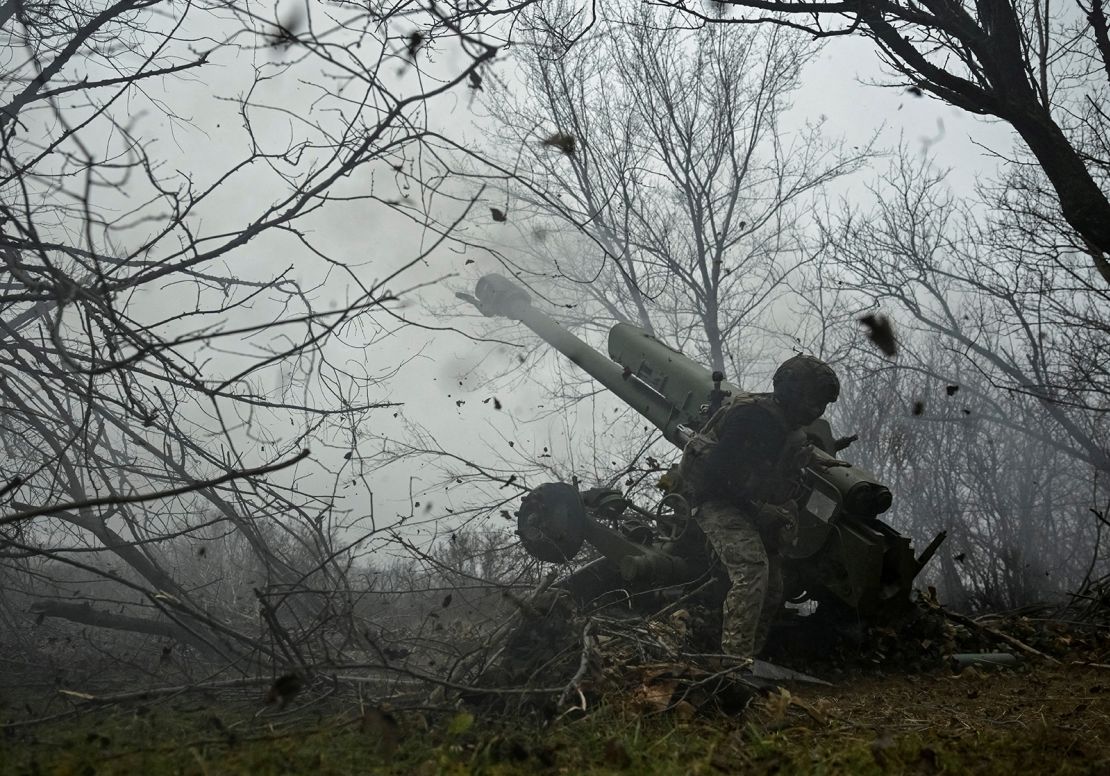
The Trump administration is about to get a demonstration of Kremlin root-canal diplomacy. By agreeing in principle to the 30-day ceasefire but rejecting it in practice with a flurry of conditions requiring capitulation by Ukraine and the West, Putin stalled. Long negotiations on technical issues will give his forces time to exploit their current battlefield edge and eject Ukrainian troops from the Kursk region of Russia – one of Kyiv’s few territorial bargaining chips for any future peace talks.
Putin’s conditions for a peace deal – including the replacement of the current Ukrainian government, a demobilization of Kyiv’s forces and desire to see NATO retreat from Eastern Europe – haven’t changed.

At talks with Russia in Saudi Arabia earlier this month, Secretary of State Marco Rubio said the coming days would test Moscow’s seriousness in the negotiations. “It’ll be up to them to say yes or no. I hope they’re going to say yes. And if they do, then I think we made great progress. If they say no, then we’ll unfortunately know what the impediment is to peace here.” By Rubio’s own standards, Moscow has now answered in the negative. But he can’t say so for obvious political and diplomatic reasons and has no real choice but to keep pressing on.
Finnish Foreign Minister Elina Valtonen best summed up the current state of the talks, in an interview with CNN’s Isa Soares on Wednesday. “Trump wants peace. Europe wants peace. Ukraine wants peace. And there is only one missing – that’s Putin.”
Russia is unlikely to disengage, however. According to the Russian readout of their call on Tuesday, Putin offered Trump the chance to create the kind of broad relationship with Russia that he craves and that seems to cause the US leader to see the war in Ukraine as a sideshow. Next, the US wants to negotiate a Black Sea maritime ceasefire – and that’s fine with Putin too, since just like the proposed halt to attacks on energy infrastructure, it could deprive Kyiv of one of its most successful arenas of combat.

Russia’s Black Sea strategy is key to understanding the war in Ukraine. See how.

